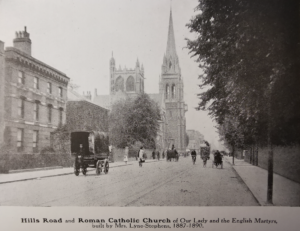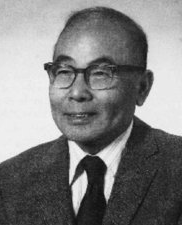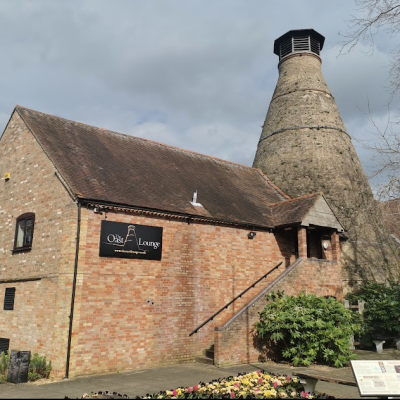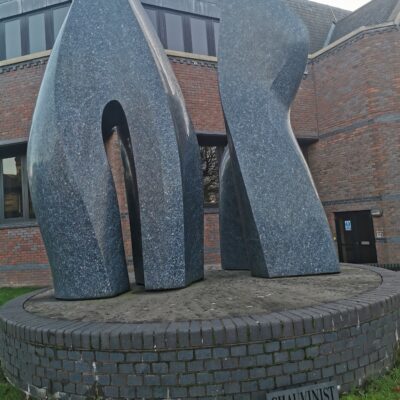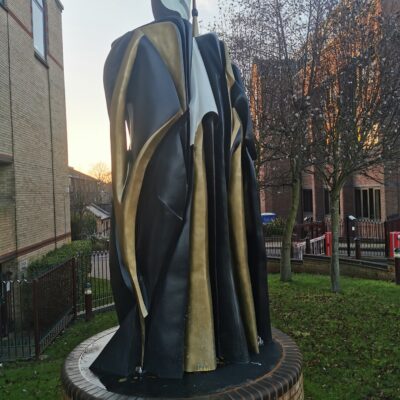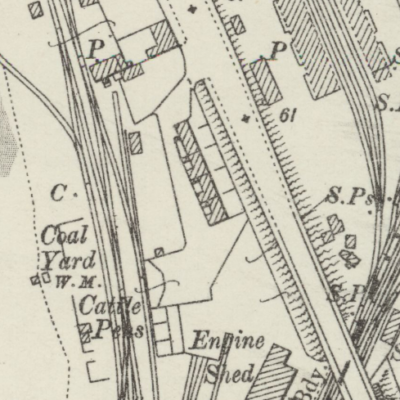Search by topic
- archaeology
- Building of Local Interest
- chapel
- charity
- church
- crime
- dressmaker
- fire
- Great Eastern Railway
- Listed building
- Mapping Relief
- medieval
- oral history
- poverty
- Public House
- Religious House
- Roman
- scholar
- school
- Then and Now
- tudor
- women
- work
- world war one
- world war two
Search by text
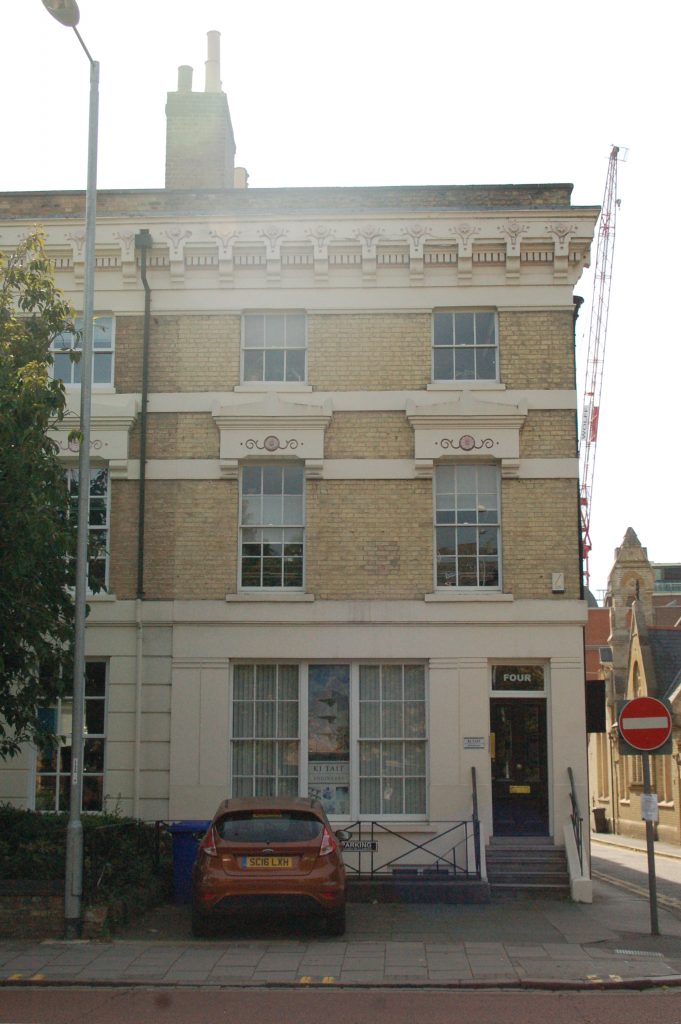 4 Hills Road Cambridge
4 Hills Road Cambridge4 Hills Road (3)
History of 4 Hills Road
1851 (3)
William Davy, 69, gentleman, b Oxon, blind
Amelia, 50, lady, b Ireland
Thomas Quinlivan, 34, Roman Catholic priest, b Ireland
William Collis, visitor, 29, railway inspector
Elizabeth Maguire, 29, servant, b Soham
William Blackman, 9, servant, b Soham
According to ‘Catholics in Cambridge’ ed.Nicholas Rogers, Thomas Quinlivan was the first rector of the Catholic mission in Cambridge. He was born in 1816 in Lisborn, County Clare. He arrived in Cambridge in 1843 and quickly became a popular figure. Although at the time of his arrival there were very few Cambridge born catholics in the congregation, by 1857 the number of converts received into the church in Cambridge by Canon Quinlivan was little short of 300.
Despite Canon Quinlivan’s popularity in the town, it was not uncommon for ‘young protestants bloods’ to enter the chapel to cause trouble. One source of these was Cavendish College. Students from here would often disrupt Vespers and benediction at St Andrew’s chapel and ‘detectives’ had to placed in the congregation to identify trouble makers and remove them before things got too bad.
In 1859 there was an episcopal visitation. This produced statistics for 1858 which show 19 Baptisms, 11 Conversions, 139 Easter Communions, 2 Marriages and 6 Deaths. The congregation is listed as ‘about 290’ comprising 210 adults and 80 under-fourteens.
In 1858 Canon Quinlivan’s house is described as ‘hired’, and was dependent on income from the offertory which, he said, ‘fell short of the wages of a common mechanic.’
William Davey was, after the Hiddleston family at Sawston Hall, the most significant supporter of the early Catholic mission in Cambridge. He had been born in Dorchester in 1782 to an old Oxfordshire Recusant family. His wife, Amelia, was a benefactress of the mission. Sometime in 1843 Quinlivan moved from his first residence (probably one of the old cottages on Union Road) into the Davey residence at 3 Hills Road. This enabled the cottages to be converted into a school.
Other residents in 1851 were William Collis and William Blackman. They would later both become priest in the Northampton diocese.
Universal praise was lauded upon the Davey couple and in 1858 Canon Quinlivan had taken upon himself to say one Mass a month for them. In 1847 the Davey Trust was initiated; by the late 1850s the finances of the Mission were in much better shape thanks to two large sums, one from the Davey Trust, the other from the Huddleston Trust.
1861 (3)
Thomas Quinlivan
Amelia Davey, boarder, 58, widow, fundholder’s widow, b Ireland
Elizabeth Hopper, servant, 25, b Thetford
Thomas Quinlivan had come to Cambridge from St Etheldreda’s in Ely.
1871 (3 Hills Road)
Thomas Quinlivan, R Catholic Priest St Andrews New Town
Elizabeth Hopper, servant, widow, 68, housekeeper, b Hants [may be some confusion in this entry between Elizabeth Hopper and Amelia Davey]
1881 (3 Hills Road)
Thomas Quinlivan, 64, Roman Catholic Priest, b Ireland
Arthur J Wallace, boarder, 40, Roman Catholic Priest, b Suffolk
Margaret Reddan, 36, housekeeper, b Ireland
A J Wallace was a convert undergraduate from Emmanuel College. He gifted to St Andrew’s chapel a statue of the Blessed Virgin which had been found buried in the grounds of Emmanuel College.
1891
William Henry Weston
Laura
Elizabeth Ann Bye, servant, 24, b Soham
1901
William H Weston
Laura,
Dora S R Cooper,
Edith Carrington, servant, 18, b Chesterton
1911
William Henry Weston, 59, medical practitioner, b Notts
Laura, 57, b Cambridge
Dora Searle Robertson Cooper, niece, 26, assistant teacher, b Herts
Sarah Elizabeth Dimock, servant, 23, b Stretham
1913
W H Weston, MD, surgeon
1939
(Flat 3) Francis Lang Kwang Hsu, b 1910, research student anthropology [active in the field of psychological anthropology]
Ruth Wen Mei Hsu, b 1909
(Flat 4) Leonard J Smith, b 1910, chartered accountant
Edith M Smith, b 1909, ex teacher
(Flat 5) Beatrice C M Woollard, b 1907
?
Antony M Woollard, b 1932
?
?
Contribute
Do you have any information about the people or places in this article? If so, then please let us know using the Contact page or by emailing capturingcambridge@
License
This work is licensed under CC BY-NC-SA 4.0





